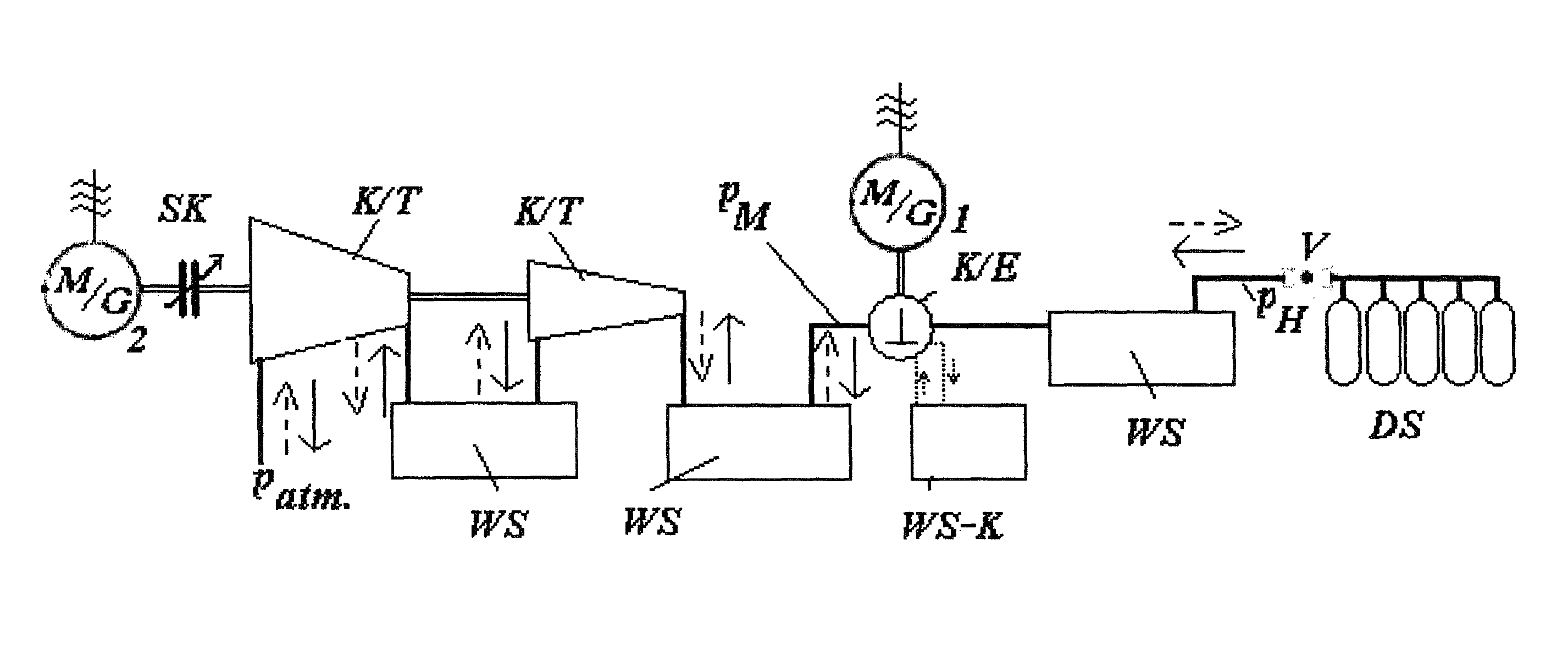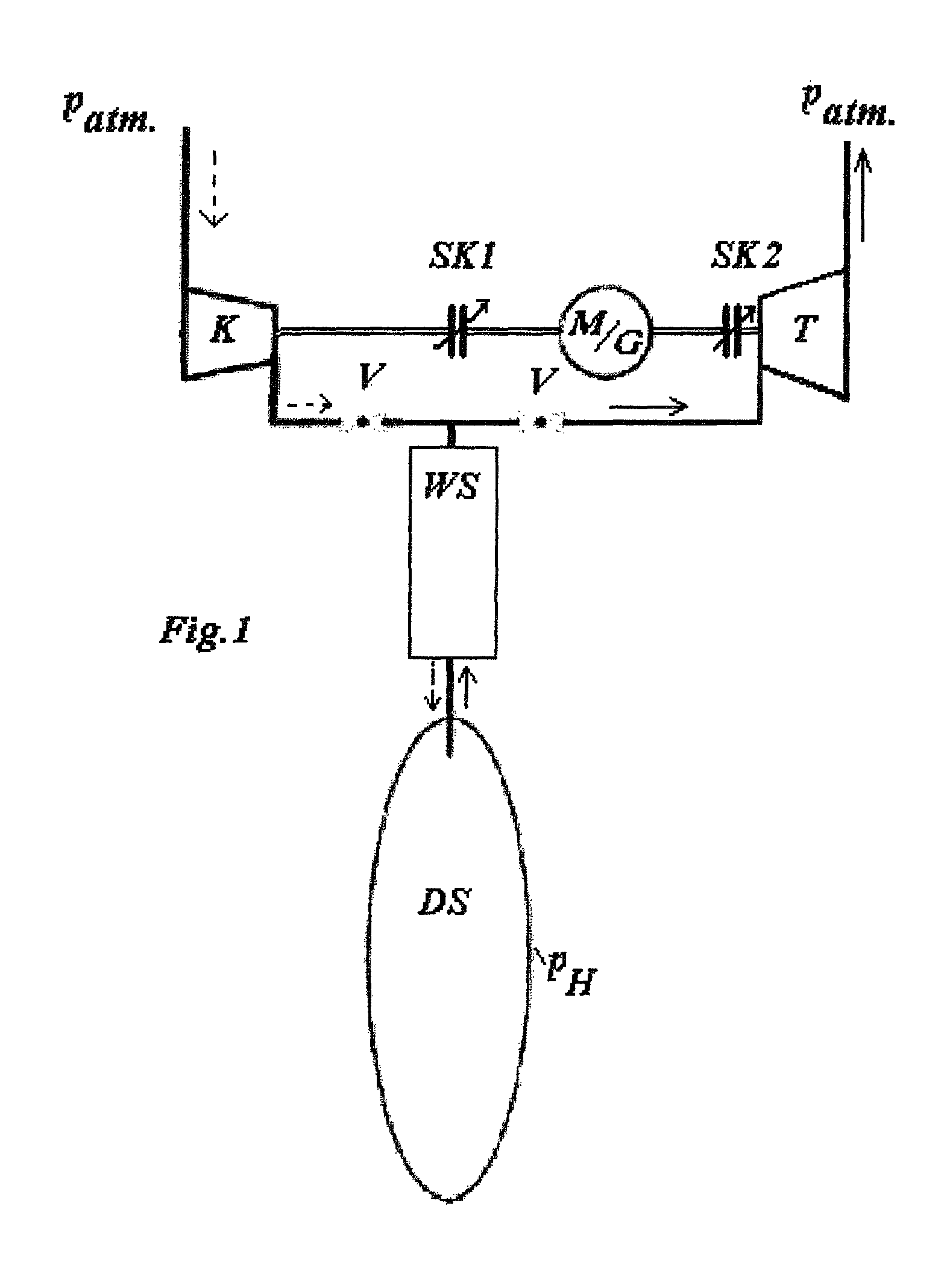System for storing energy by means of compressed air
a technology of compressed air and energy storage, which is applied in the direction of machines/engines, mechanical equipment, greenhouse gas reduction, etc., can solve the problems of uneconomical initial investment of many millions of euros for a bore into the ground, and the cost of the operation of such a plant is almost exclusively capital cos
- Summary
- Abstract
- Description
- Claims
- Application Information
AI Technical Summary
Benefits of technology
Problems solved by technology
Method used
Image
Examples
Embodiment Construction
[0029]It is the intention for the possibility of storing energy, in particular renewable energy, on the medium scale of approximately 1000 to 100,000 kWh using compressed air to be improved through the creation of a specific combination of machines which alternately compresses ambient air for the storage of energy and re-expands said compressed air for removal from storage. The storage costs are thus defined substantially by the production costs of the storage volume. The costs are reduced through good utilization of the storage volume by means of high-pressure and high pressure fluctuation. This is possible by means of a combination of a high-pressure machine (preferably high-pressure positive-displacement machine), in particular with regulable control timing, connected in series with a low-pressure turbomachine, wherein both operate as a compressor during storage and as an expansion machine during removal from storage.
[0030]It is advantageously the case that a low-pressure turboma...
PUM
 Login to View More
Login to View More Abstract
Description
Claims
Application Information
 Login to View More
Login to View More - R&D
- Intellectual Property
- Life Sciences
- Materials
- Tech Scout
- Unparalleled Data Quality
- Higher Quality Content
- 60% Fewer Hallucinations
Browse by: Latest US Patents, China's latest patents, Technical Efficacy Thesaurus, Application Domain, Technology Topic, Popular Technical Reports.
© 2025 PatSnap. All rights reserved.Legal|Privacy policy|Modern Slavery Act Transparency Statement|Sitemap|About US| Contact US: help@patsnap.com



